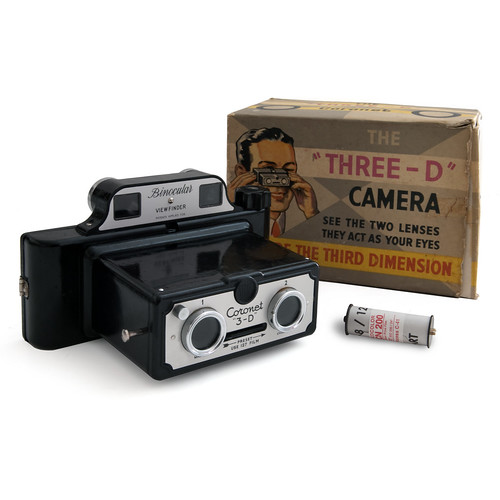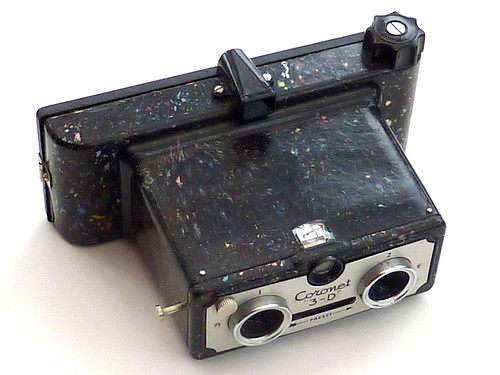Difference between revisions of "Coronet 3-D"
m (CW pool made human-readable) |
m (- stub, + present tense) |
||
| Line 1: | Line 1: | ||
| − | + | ||
{{Flickr_image | {{Flickr_image | ||
|image_source= http://www.flickr.com/photos/37796451@N00/5150169861/in/pool-camerawiki | |image_source= http://www.flickr.com/photos/37796451@N00/5150169861/in/pool-camerawiki | ||
| Line 9: | Line 9: | ||
}} | }} | ||
| − | The "'''Three-D'''" from [[Coronet]] | + | The "'''Three-D'''" from [[Coronet]] is a stereo camera for pairs of photos on [[127 film]]. The early versions have a ribbed bakelite case, although these were supplanted by the smooth case shown here. Later models have a speckled bakelite body. The camera employs fixed focus lenses with a single shutter speed, and the shutter release is located on the right side of the camera, towards the front of the body. |
| − | It | + | It is possible to switch the camera to taking 8 single (non-stereo) images per roll by blocking one lens with a built-in internal metal cover. |
Revision as of 05:53, 19 May 2019

|
| with binocular viewfinder image by Adam Jenkins (Image rights) |
The "Three-D" from Coronet is a stereo camera for pairs of photos on 127 film. The early versions have a ribbed bakelite case, although these were supplanted by the smooth case shown here. Later models have a speckled bakelite body. The camera employs fixed focus lenses with a single shutter speed, and the shutter release is located on the right side of the camera, towards the front of the body.
It is possible to switch the camera to taking 8 single (non-stereo) images per roll by blocking one lens with a built-in internal metal cover.

|
| speckled version with telescopic & waist-level finders image by Tony Kemplen (Image rights) |